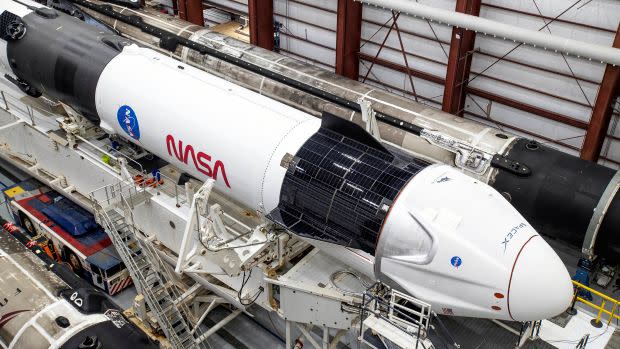Inside the US government’s effort to start measuring the space economy

Word came down to the Bureau of Economic Analysis in 2019: We’d like you to measure the American space economy, please.
The task fell into the capable hands of Tina Highfill, a 17-year veteran of the statistical agency. Her role as a research economist includes developing new measures of economic activity that don’t fall into neat buckets already, like travel and tourism or healthcare. These are called “satellite accounts,” and now they need one for satellites.
The first challenge? Defining “the space economy.” For that, the BEA developed a three-part test that includes products used in space or supporting space activities, products requiring space inputs, or products associated with studying space. So, rockets, satellites, and antennas are in the first group, remote sensing in the second, and the college tuition paid for astronomy class is in the third.
Even that gets complicated. Consider solar electricity. You can’t make that without a key input from space, but it’s not included in this account for largely conceptual reasons: People in the space sector and those in the energy sector don’t see themselves as working in the same industry. But that might change if visions of orbital solar panels beaming electricity to the earth ever come true.
After setting their parameters, Highfill and her colleagues then had to comb the BEA’s detailed measures of goods and services produced in the US to isolate space production. They also relied on tax filings, occupational data from the Bureau of Labor Statistics, and National Science Foundation records, among other sources.
“I was surprised by how pervasive space activity is within our economy,” Highfill told me. “Even if it’s small, every major sector of our economy has some space activity in it.”
In 2018, the most recent year estimated, the BEA found that the US space economy produced $178 billion worth of goods and services, employing some 356,000 people in the private sector. That’s not half bad! But it’s not enormous, either, considering that all US industries produced $36 trillion of gross output that same year. Still, Highfill is right that space is adding value across the economy, which makes this satellite account so interesting.
For example, nearly 8% of all US computer and electronics output is attributable to the space economy. That may reflect the nature of electronics products made in the US—only the most high-precision manufacturing is done in the US—but also the importance of space to the high-tech industrial base.
One big question that these statistics unfortunately don’t yet answer is whether the space economy is getting bigger, smaller, or simply more productive. The initial figures have not been adjusted for inflation, which means that as the value of these outputs changes, it’s difficult to tell if that means the level of production is changing, or if the cost of the product is falling.
Still, there are some interesting tea leaves. Consider one vital chunk of the space economy, manufacturing. This chart shows four of its most important components:
We can see the value of hardware produced in the US—satellites and GPS receivers, and rockets and space missiles—has actually fallen during the previous decade, which doesn’t jibe with tales about the $1 trillion space economy. At the same time, we see the margins earned by selling space goods have risen for both wholesalers and retailers. To take one example, GPS receivers—both standalone navigation tools and the chips that go into phones and lots of other devices—are making merchants more money.
“We think the price of these satellites are actually declining due to productivity gains,” Highfill says. That makes sense in world where space business success stories are often tales of engineers taking a multibillion-dollar government satellite and recreating its capabilities (or near enough) with a spacecraft costing millions of dollars, if not less. Moore’s law may just be late to space. But we won’t know with any certainty until these estimates are adjusted for inflation.
Less promising for space bulls: Growth in the space economy still lags behind the US writ large, although again we must be careful when looking at numbers that haven’t been adjusted for inflation. This chart compares all sectors, the space economy, and a “narrow” space economy whose definition excludes space education, satellite TV, and satellite radio. Notably, this more specific measure is growing faster than the broader one.
Alongside the work of the OECD, it’s fair to say that the BEA’s is the most sophisticated measure of the US space economy available. This year, Highfill and her colleagues plan to add 2019, adjust the series for inflation, and include government employees who are focused on space. But the future of this metric is not guaranteed, since it does not have permanent funding from Congress. Space advocates might add this to their wish list when talking to lawmakers and executive branch officials. After all, if you don’t measure, it doesn’t matter.
A version of this post was originally published in Quartz’s Space Business newsletter.
Sign up for the Quartz Daily Brief, our free daily newsletter with the world’s most important and interesting news.
More stories from Quartz:
